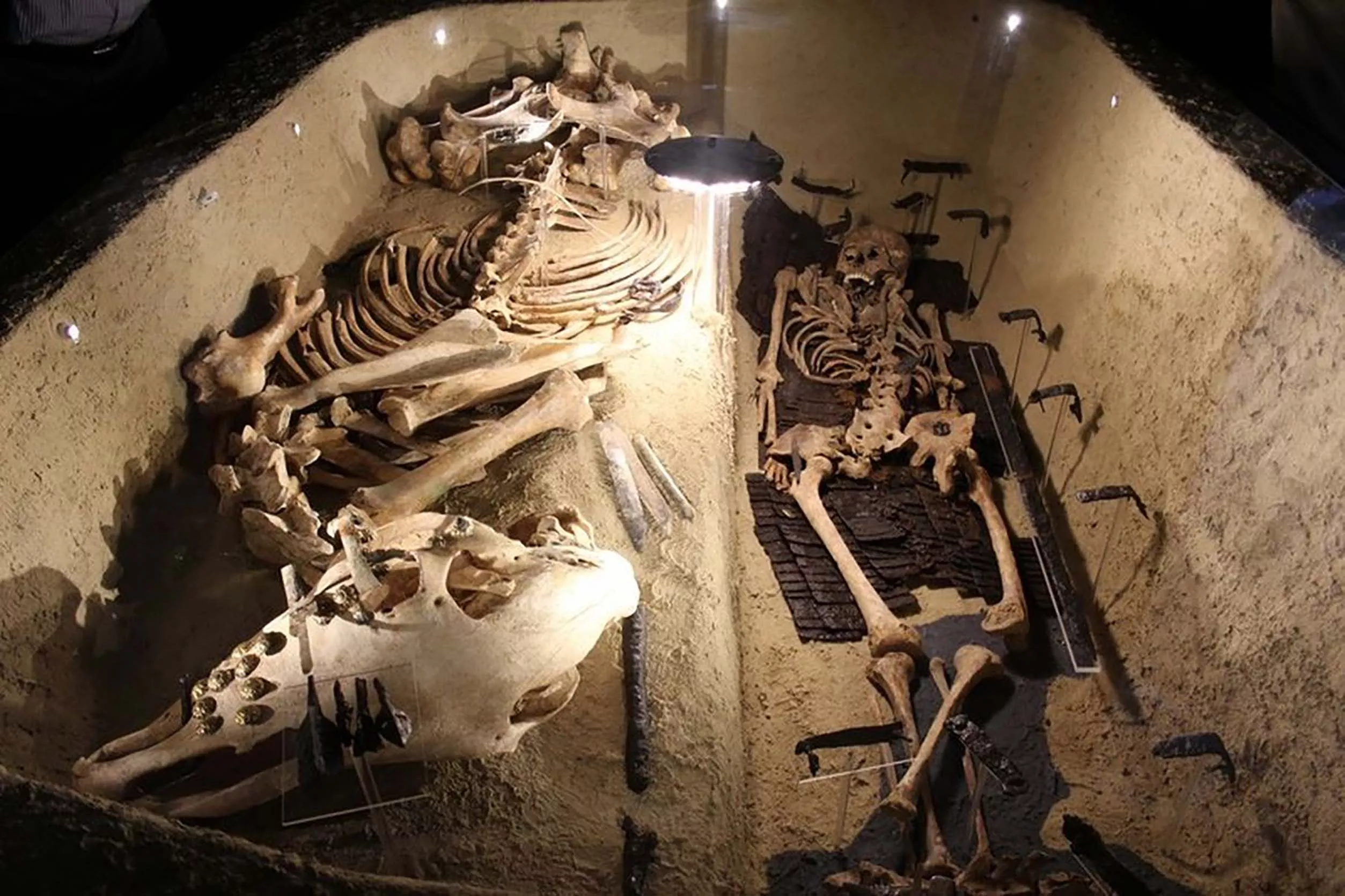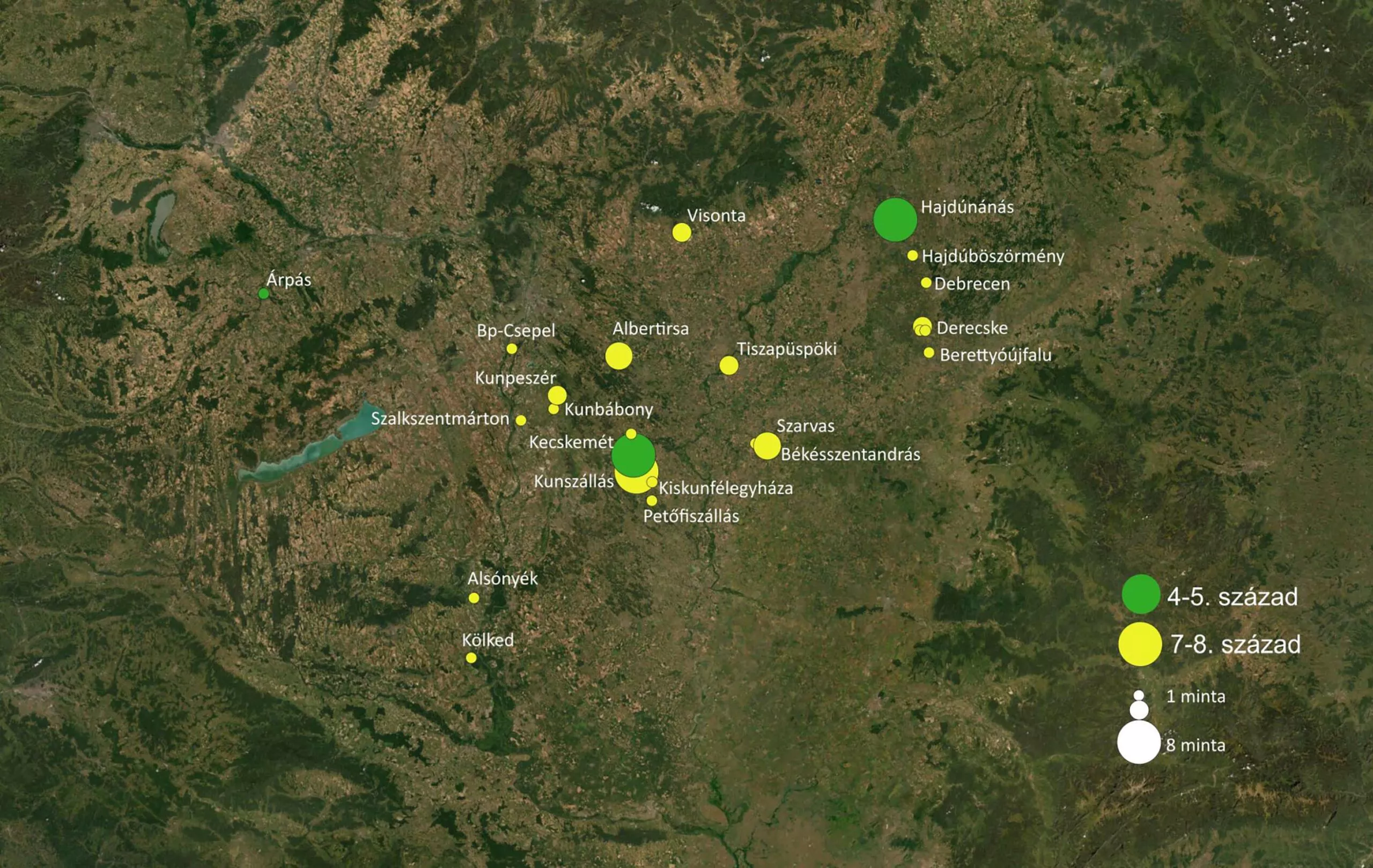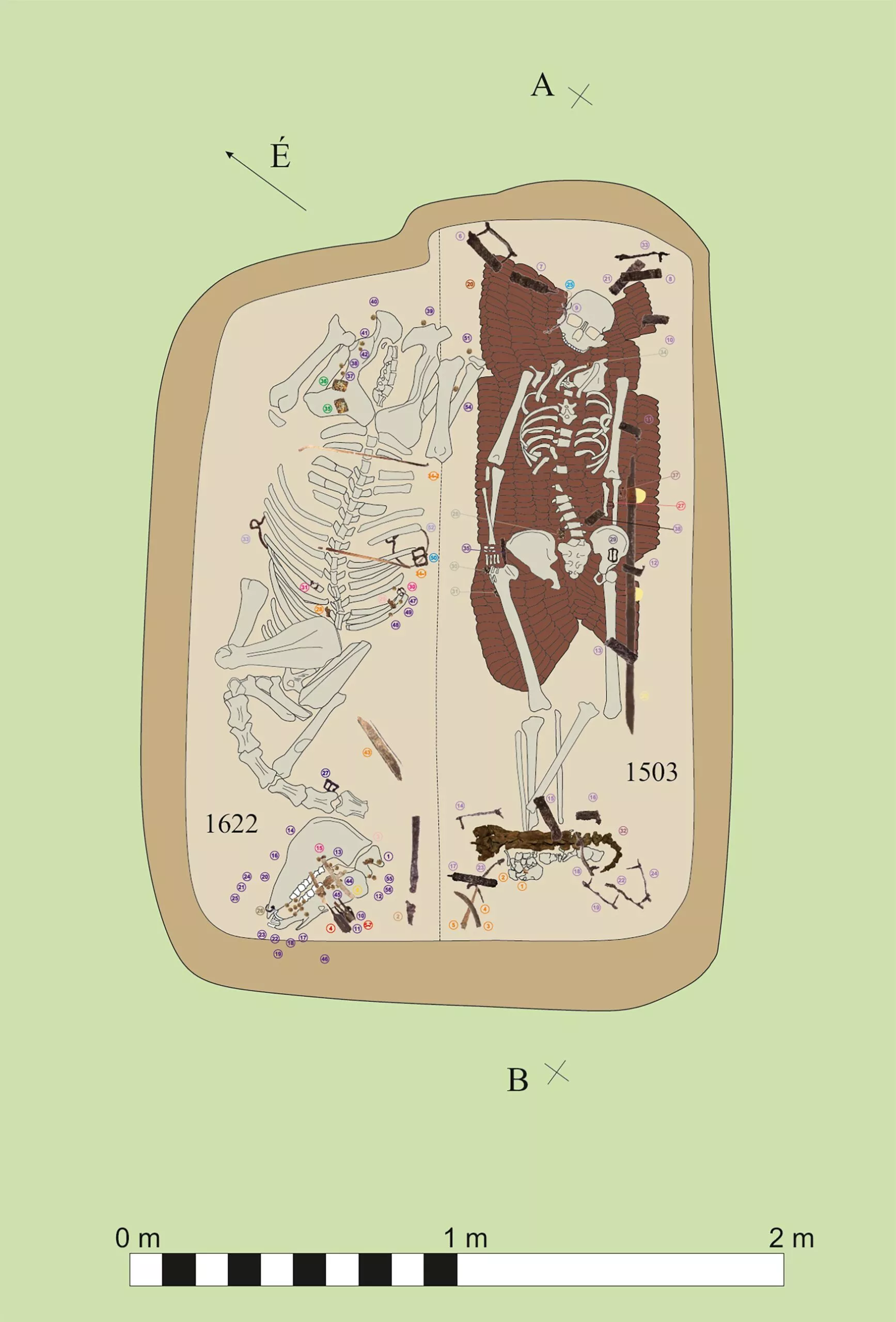The ELKH Research Centre for the Humanities (BTK) Institute of Archaeogenomics and Institute of Archaeology have both participated in the genetic research of the Avar elite, with the latest findings presented in the prestigious life sciences journal Cell in early April. The study Ancient genomes reveal origin and rapid trans-Eurasian migration of 7th century Avar elites was conducted by a multidisciplinary research team of geneticists, archaeologists, anthropologists and historians. The work, which is based on the analysis of Hungarian anthropological finds, traces the genetic origin of the Avar nobility to an eastern region of Central Asia and confirms the results of an archaeogenetic study by Hungarian researchers published in Scientific Report in 2020. The new study, however, which is based on a broader database and complete genomic analyzes, provides direct genetic evidence for one of the greatest, far-reaching, rapid migrations in human history.
The Avars ruled much of Central and Eastern Europe for almost 250 years. Though they came from Asia in the 6th century AD, their origins have been surrounded by controversy for both ancient authors and modern historians. It has been suggested that they are descendants of the people of the Rouran Empire, known as a formidable enemy of China, and that some of their groups may originate from Central Asia and Eastern Europe, respectively.

Though the center of the Avar Kaganate, established in the 560s AD, was in the Carpathian Basin, the original homeland and origins of the Avar remain unclear, despite scientific debate on the subject. Historical sources have been left to us primarily by their enemies, the Byzantines, who, after the sudden appearance of the Avars in Europe, attempted to uncover the origins of these formidable warriors. Did they really come from the Rouran Empire on the Mongol Steppe, which was destroyed by the Turks in 552, or can we believe the Turks, who strongly disputed this prestigious heritage?

Historians have so far sought to answer the question of whether the Avar migration was a well-organized popular movement or whether a group of 'fugitives' fleeing the Turks settled in the Carpathian Basin. Archaeological excavations have already shown many parallels between nomadic finds in the Carpathian Basin and Eurasia, includig weapons, utensils, and horse tools. The Carpathian Basin and the territory of Mongolia are also connected by the use of lunula-shaped chest ornaments made of precious metals, which are a common symbol of power. It is also known that the stirrup was widely distributed in Europe by the Avars. Despite all this, it has not been possible to precisely trace the origin of the Avars on the wide Eurasian steppes.
The recently published study analyzed the remains of 66 people from the Carpathian Basin who lived in the 4th and 8th centuries, including eight of the richest Avar nobles ever discovered, and their gold objects. The genetic analysis began in the BTK Institute of Archaeogenomics, then continued at the EVA Department of Archaeogenetics at the MPI in Leipzig, supplemented by the results of a Harvard laboratory. In addition to Avar individuals, the study also examined other groups from the Hungarian region, such as the Sarmatians and Huns. Genome-wide DNA data obtained from the analyzes provided definite clues as to the origin of the population.

Placing the archaeogenetic results in a historical context also enabled researchers to narrow down the exact timing of Avar migration. The Avars traveled more than 5,000 kilometers from Mongolia to the Caucasus in a few years, and then settled in what is now Hungary for another ten years. This migration is one of the fastest long-distance migrations in human history and has now been reconstructed with the help of ancient DNA.
“We also see that the 7th-century Avar elite, in addition to their clear genetic connection to Northeast Asia and their origins in the fall of the Rouran Empire, are likely to be linked to the North Caucasus and the Eastern European steppe by another 20 to 30 percent. it can also refer to migration from these areas,” said Guido Gnecchi-Ruscone, one of the primary authors of the study.
"The dominant genetic heritage of East Asia can be found in several cemeteries in the central Avar settlement area between the Danube and the Tisza," added Anna Szécsényi-Nagy, the archaeogenetician of BTK and the other primary author of the study.
However, outside the primary settlement region, the researchers found a significant difference in the degree of mixing between individuals, especially at the Kölked site in South Transdanubia. This suggests that an immigrant Avar elite used the heterogeneous local elite to manage a diverse population.
"These exciting results point to the potential of unprecedented collaboration between geneticists, archaeologists, historians and anthropologists in researching the age of migration," said Vida Tivadar, director of the ELTE BTK Institute of Archaeological Sciences, the Hungarian initiator and leader of the research.
Genetic research was carried out within the framework of the international HistoGenes project funded by the European Research Council, which was carried out in the Carpathian Basin in Kr. It examines its period and populations from 400 to 900 from a multidisciplinary perspective.
In addition to the ELTE BTK Institute of Archaeological Sciences and the two ELKH institutes, the research also involved the Max-Planck Institute for Evolutionary Anthropology in Leipzig, the ELTE Department of Biological Anthropology, Harvard Medical School, the Austrian Academy of Sciences and the Institute for Advanced Study, as well as other Hungarian and international institutions.